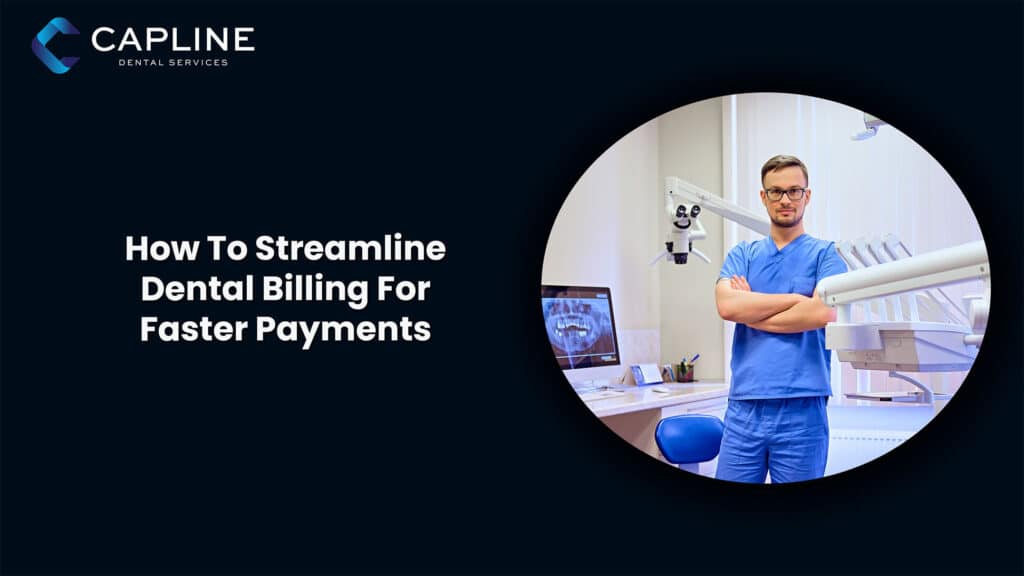
Dealing with insurance claims can be overwhelming, especially when coding errors and reimbursement delays are about chasing payments. The challenges drain the profitability and affect the RCM.
To help practices with dental insurance billing and collection, numerous moving parts are involved. The right strategy helps the practices streamline dental billing process and reduce burdens. This could enhance positive patient experience and faster payments.
Dental billing is demanding, but the dental practice should advance with technology. Automating key functions, such as eligibility, claim submissions, and coding, can help the practice become a profitable engine.
A streamlined dental billing process involves submitting and following up on claims to ensure the practice is paid for the rendered services. Dental billing is an information-based process that requires demanding tasks to survive and prosper.
Let’s dive into the tools that help the practice thrive in 2025, because what billing was four years ago cannot be compared with today's scenario. Dental billing is a steady source of revenue that requires appropriate tools, strategy, and training to deliver within certain parameters:
Claim scrubbing by AI before the final submission to payers can prevent denials and identify issues such as missing documents, invalid codes, and policy loopholes. The early predictive algorithm notifies the most at-risk claim first.
The appeals response time is usually days, and through automation, it gets reduced to hours. Dental billing automation reduces claim denials by 33%, resulting in a reduction in administrative work and improved collections.
How to control consistency at various sites? For DSOs and Dental Groups, having a centralized procedure can enhance the billing process, reduce redundant effort, and improve the collection rate. Computerized billing SOPs at every location create consistency in the process, while cloud-based dashboards monitor real-time data to conquer the AR days, collection ratios, and denial rates.
Automating workflows, such as data entry, eligibility verification, and follow-ups, helps dental practices be competitive in times. Technology supports the practice in achieving tasks with accuracy.
Dentistry involves dental and medical codes, which, when combined, create a new source of revenue. Cross-coding, if performed correctly, is the key to professional success. Bone grafts, TMJ, sleep apnea appliances, and emergency trauma use cross-coding for quick payments. The computer billing system has a way to fit CDT codes into the CPT. When the administrative team obtains proper training to establish medical necessity for carrier acceptance and maximum benefits, it opens the door to reimbursement.
Patients' expectations are increasing with the digital upgrade. They would like to have payment choices to choose from. Payment reminders, mobile payments, recurring package billing, and upfront cost estimates ensure faster payments, fewer collection issues, improve patient experience, and better retention.
Chaos creates confusion, and each part of the billing process requires accountability. A simple mistake in the essential tasks can slip through the cracks and cause severe security issues. Remote access data sharing necessitates that dental offices achieve compliance in today’s times. Core security includes encrypted PMS solutions, multi-factor authentication, role-based access controls, and audit trails.
HIPAA in 2025 requires increased logging and visibility. Non-compliance risks the reputation and incurs massive penalties. To stay ahead of the latest regulations, staff should have the necessary training to prepare and reduce the risk.
Outsourcing to Capline Dental Services is another way to improve patient satisfaction, and no longer face the challenge of collecting payments.
Major Issues Dental Practices Face in Dental RCM
Example:
Solution: Implementing dental billing automation saves cash. The staff should have dental tips and coding updates to enhance overall profitability. Outsourcing dental insurance billing and collection to Capline Services is an added advantage to RCM.
Blockchain and virtual assistants are emerging technologies that offer accuracy and efficiency. Virtual assistants can authenticate verification in real-time, automatically fill entries in claims, and notify patients about remaining balances.
Blockchain is eradicating fraud. Technology is becoming the forefront, and using blockchain for tracking claims achieves phenomenal results with reduced onboarding times. Ideally, the average denial rate should not exceed 15% and the average time to receive payment is 23 days to obtain peak billing performance.
The statistics indicate that a mid-sized practice with dental billing automation can reduce its denial rate from 20% to 10% within a quarter. Collections improve by 20% with each quarter. Implementing centralized SOPs and cloud PMS resulted in a 13% decrease in AR days and a 40% decrease in staff utilization on billing within 180 days. Dental billing automation, if executed correctly, shows tremendous results.
Capline Dental Services has been helping practices to streamline dental billing process with billing best practices for decades. If you have any doubts, feel free to reach out to our experts.